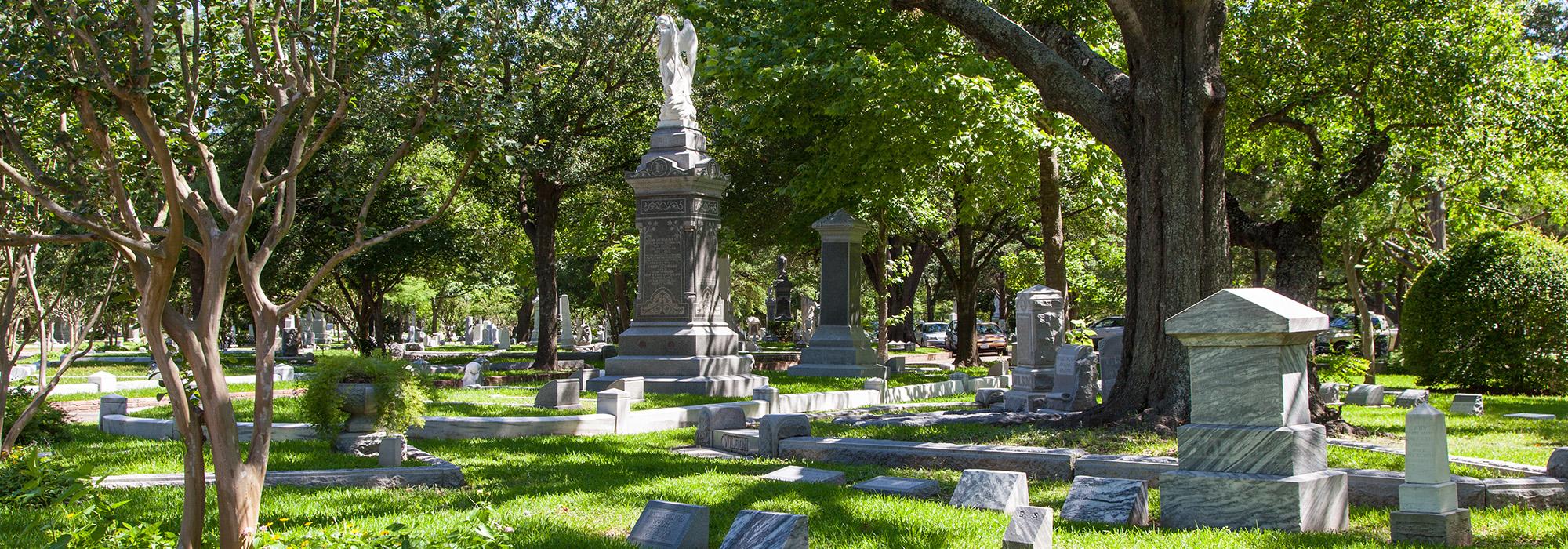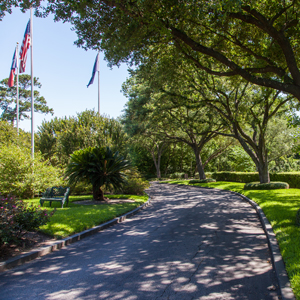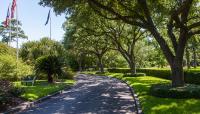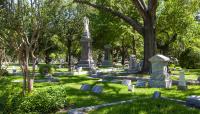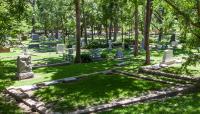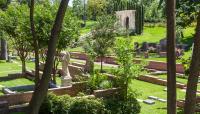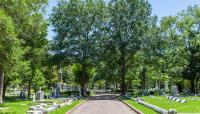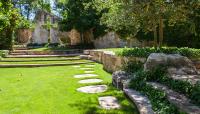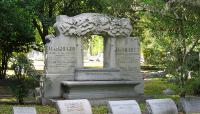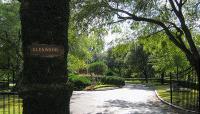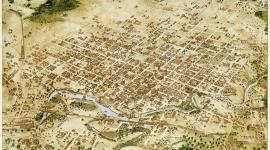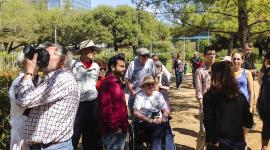Opened in 1872, just one mile west of downtown Houston, this burial ground was designed to take advantage of the site’s naturally undulating topography, mature vegetation, network of ravines, and panoramic views to the emerging city skyline. The Houston Cemetery Company purchased a 54-acre pasture in 1871; for the next fifteen years the company’s president John Haywood Manly and his colleague, English-born gardener Alfred Whitaker, sculpted and refined the existing landscape into a park-like cemetery. A graceful network of carriage drives and paths, rustic wooden bridges and benches, and an enclosing white picket fence complemented the bucolic setting. Family burial plots with ornamental plantings and ornate marble and granite monuments were juxtaposed with rolling hills, native trees, and views of Buffalo Bayou, which formed the cemetery’s southern edge.
In the 1890s, the cemetery—plagued by poor maintenance, impacted by storms and flooding, and subject to looting—was forced into receivership. By 1910, however, conditions had improved: an idyllic lake was created from a natural oxbow (although mostly infilled a decade later), additional land was purchased and burial sections platted, and ravines were filled, culverts installed, and retaining walls constructed to prevent flooding and erosion. Development continued apace and, in 1994, Glenwood Cemetery assumed management of Washington Cemetery (established in 1887) , which lies on adjacent property to the west of Glenwood. Now comprising 84 wooded acres on undulating topography, Glenwood is the setting for more than 20,000 burials. A mature canopy of live oak, bald cypress, and loblolly pine shades numerous irregularly shaped burial plots containing statues and markers, as well as terraced monuments. In 2005, SWA Group prepared a master plan to guide Glenwood Cemetery’s development and land use.



